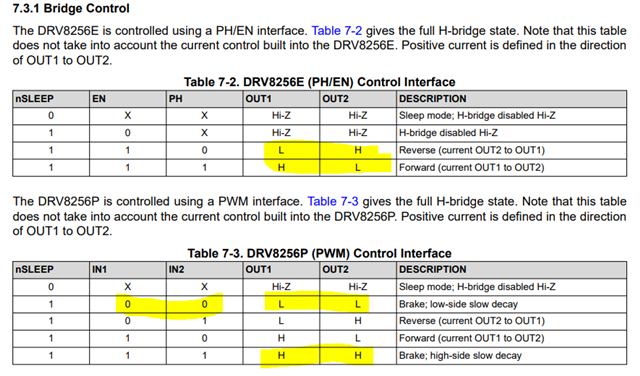Other Parts Discussed in Thread: DRV8256
Can both pairs of channels on the DRV8424E or DRV8424P be run in parallel to up the amperage to 5A? If not, is there an upper limit to the parallel current operation?
Looking for maybe 3.1-3.8A reliably, but want to see how high it can go.


